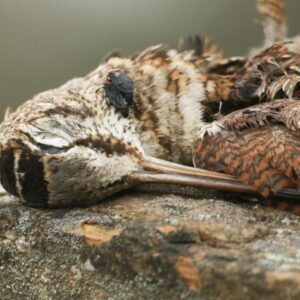Thousands of songbirds killed at gas plant
Last week thousands of birds were killed after flying into a gas flare at a natural gas plant operated by Canaport LNG in Saint John, New Brunswick. It appears that the birds – most of them songbirds – were confused by the bright light emitted by the flare and were drawn to it like moths.
It’s estimated that 7,500 songbirds died at the plant, cutting short their yearly migration to wintering grounds in Mexico, Central and South America. Among the birds identified at the site were red-eyed vireos, black-and-white warblers, magnolias, redstarts, and a few thrushes and rose-breasted grosbeaks.
Don McAlpine, the head of zoology at the New Brunswick Museum, was quoted in a CBC News story as saying, “”A crude estimate at this stage suggests about 7,500 birds died,” he said. “There’s certainly more than 5,000 and probably less than 10,000 birds affected.”
In the same story, McAlpine raised the possibility that endangered species like the olive-sided flycatcher and Canada warbler, could be among the birds killed by the flare.
This is very troubling news considering aerial insectivores like the olive-sided flycatcher are in steep decline in southern Ontario, Quebec and the Maritimes. In State of Canada’s Birds, a recent report co-authored by Nature Canada, researchers in the field determined that aerial insectivores as a group have declined by almost 70% in the past forty years. Contributing factors to the decline include loss of habitat, pesticide use and pollution.
Sadly, the number of birds killed every year in the United States number in the billions. The tragedy in Saint John is an example of birds dying as a result of human activity on a much smaller scale than what is playing out across the continent every year. A leading cause of bird deaths are collisions with tall buildings followed closely by predation by feral and domestic cats.
If you’re a cat owner one way you can help reduce the number of birds killed every year is to keep your pet indoors, especially during dusk and dawn and during the fall and spring migratory seasons. Migrating birds and young birds just out of the nest are particularly vulnerable. For more tips on how you can help birds during their fall migration, see our 10 Tips to Help Migrating Birds




